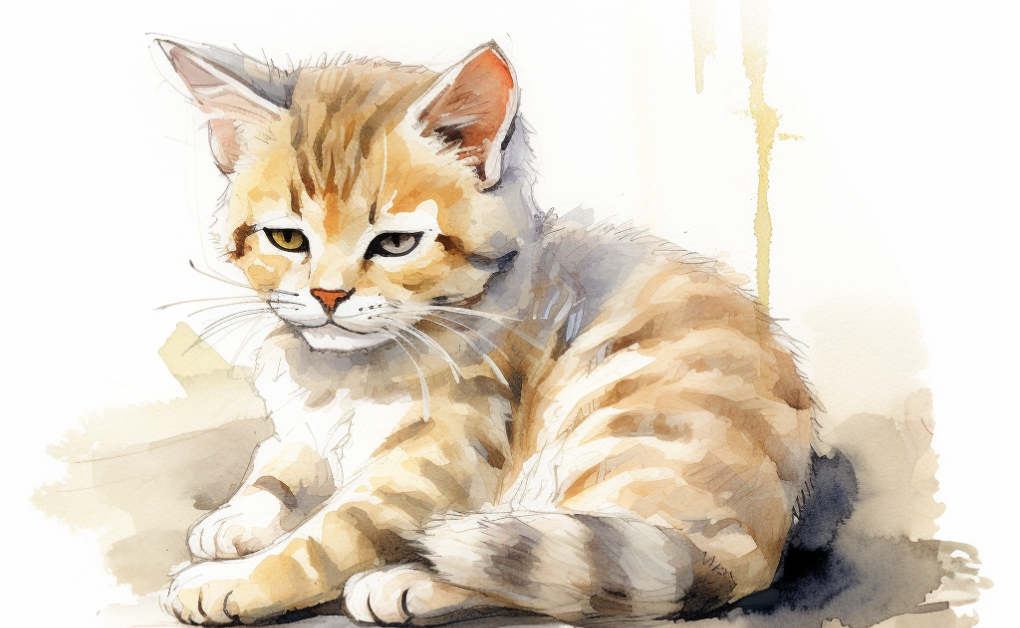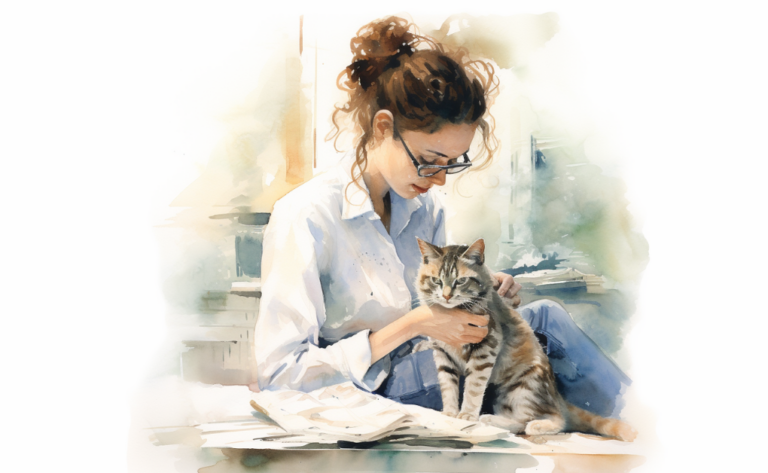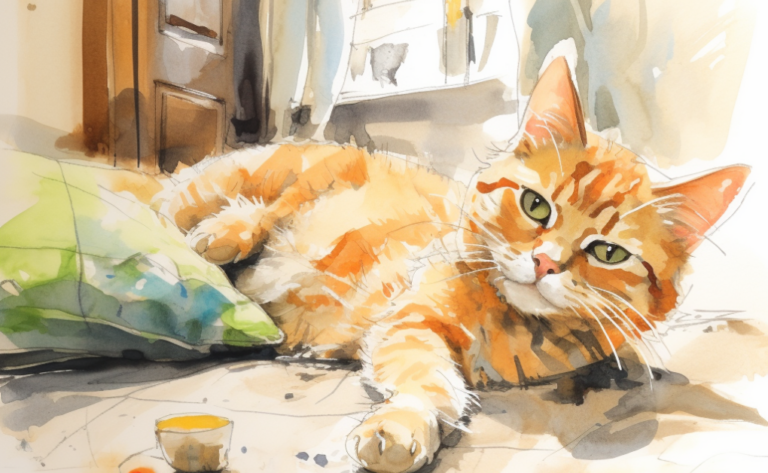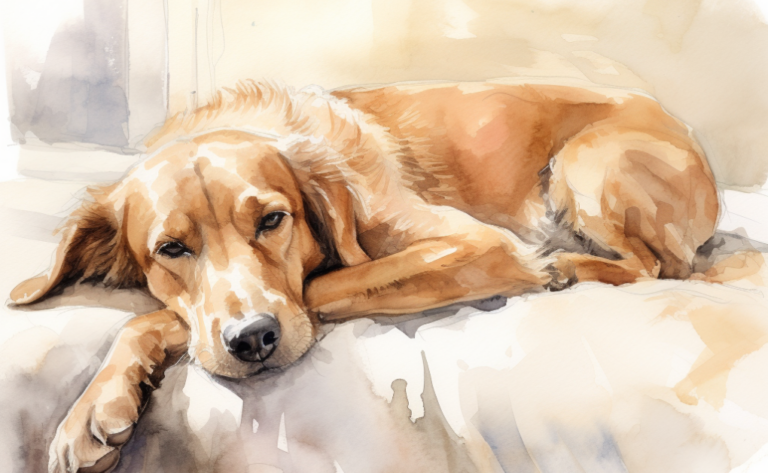What is Conjunctivitis in Cats?
What is it?
How is it Treated?
Breed Predispositions
Persian cats, Siamese cats, and Himalayan cats
Introduction
When Jane adopted her adorable new kitten, she expected the joys of watching her little furball grow, explore, and play. However, she soon noticed that her kitten’s eyes were red and swollen, with a thick discharge oozing out. Concerned and anxious, Jane took her kitten to the veterinarian, only to learn that her tiny companion was suffering from conjunctivitis.
Conjunctivitis in cats refers to the inflammation of the conjunctiva, the delicate, transparent membrane that covers the front of the cat’s eye and lines the inner surface of the eyelids. The onset of this common feline eye disorder is due to specific internal processes in the eye that activate inflammation within the conjunctiva.
The extent of conjunctivitis can range in severity and may impact one or both eyes. The conjunctiva serves a crucial function in safeguarding the eye and supplying lubrication. When conjunctivitis occurs, it interferes with the normal operations of the conjunctiva, causing discomfort and potential complications.
It’s important to identify signs of conjunctivitis promptly to secure appropriate veterinary care. The management of conjunctivitis involves identifying and addressing the root causes, which could be infectious conjunctivitis agents like chlamydia felis or non-infectious types of conjunctivitis. Treatments aim to mitigate eye inflammation and preserve the cat’s ocular health.
Immediate intervention and continuous care are necessary to avoid additional complications and secure the cat’s visual health. Notably, some forms of conjunctivitis can be contagious to humans, underscoring the importance of prompt and effective treatment.
Causes of Conjunctivitis in Cats
Conjunctivitis in cats can be instigated by a multitude of factors, such as:
Viral Conjunctivitis
Viral infections like feline herpesvirus (FHV-1) and feline calicivirus frequently precipitate cat conjunctivitis. FHV-1, or feline herpes virus, is particularly noteworthy because it’s a prevalent infectious disease in cats, known for causing intense inflammation and scarring of the eye.
This viral infection is highly transmissible among cats, spreading through direct contact with an infected cat’s saliva, urine, or other bodily secretions. After infection, a cat can become a lifelong carrier of FHV-1, with potential flare-ups during stress-filled periods.
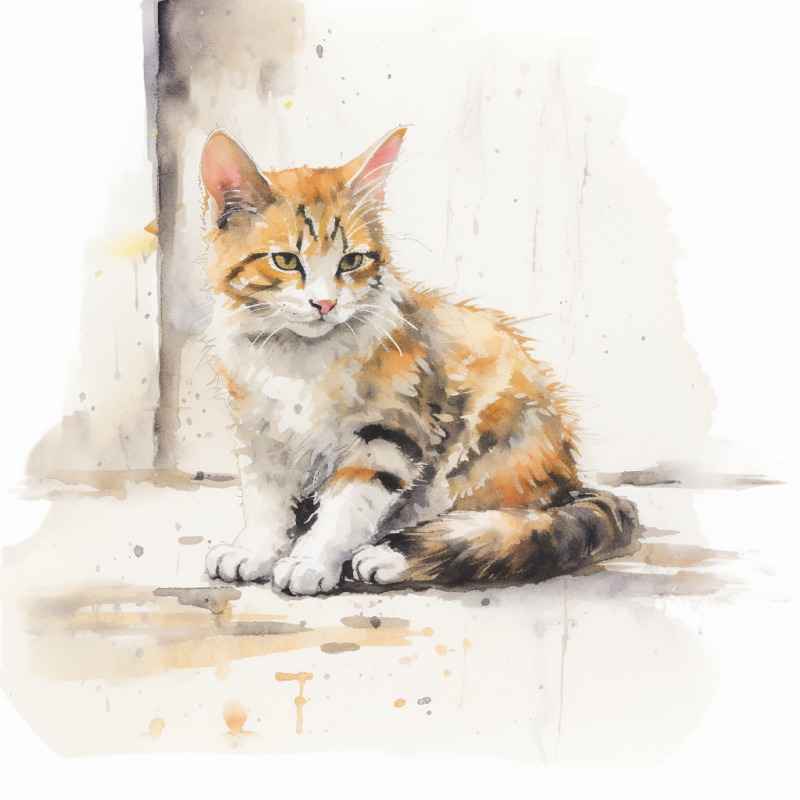
Bacterial Conjunctivitis
Bacterial infections are another common cause of conjunctivitis in cats. Chlamydophila felis and Mycoplasma are the most typical bacteria implicated. They can trigger an infection in the conjunctiva, leading to inflammation and discomfort and bacterial infection-induced conjunctivitis. This form of conjunctivitis can be a standalone illness or a secondary bacterial infection resulting from viral conjunctivitis or other eye ailments. The bacteria can transmit to an infected cat or indirectly through shared objects like bedding or food dishes.
Allergic Conjunctivitis
Although less prevalent, cats can also encounter conjunctivitis as a response to allergies. This might happen when the cat’s immune system overreacts to a benign substance like dust mites, pollen, mold, or certain foods. The allergen triggers an inflammatory response in the conjunctiva, producing symptoms of conjunctivitis. However, it’s crucial to note that cats with this conjunctivitis often exhibit other allergy symptoms like itching or sneezing.
Traumatic Conjunctivitis
Physical trauma to the eye can also instigate conjunctivitis. This could stem from a scratch, foreign object intrusion, or exposure to chemical irritants. In such cases, the conjunctival injury leads to inflammation, manifesting as conjunctivitis. The treatment typically involves addressing the cause of the trauma and providing supportive eye care.
Fungal Conjunctivitis
While not as common as viral or bacterial causes, fungi can also cause conjunctivitis in cats. This typically transpires when a cat has an underlying immunodeficiency or when the cat’s eye has been exposed to prolonged antibiotic or steroid eye drop use. Such treatments can disrupt the conjunctiva’s normal flora, leading to fungal overgrowth. Various fungi, including Aspergillus, Candida, and Fusarium species, can be involved in these infectious causes. Like other forms, fungal conjunctivitis can cause significant discomfort for the cat and necessitates appropriate antifungal treatment.
Symptoms of Conjunctivitis in Cats
Similar to humans, conjunctivitis in cats can manifest in a variety of signs and symptoms, which may encompass:
- Red and Swollen Eyes: One of the most frequent symptoms of cat conjunctivitis is the inflammation and redness of the conjunctiva, the translucent tissue encapsulating the front of the eye and lining the inner side of the eyelids.
- Eye Discharge: Conjunctivitis in cats often results in discharge from their eyes. This discharge can be transparent, watery, thick, and pus-like, often appearing yellow or green.
- Eyelid Swelling: The eyes or eyelids might seem swollen or bloated.
- Increased Squinting or Blinking: Cats suffering from conjunctivitis may exhibit increased squinting or blinking. This is commonly a reaction to eye discomfort or pain.
- Eye Rubbing: Cats may attempt to alleviate discomfort by pawing at their eyes or rubbing their face against objects.
- Light Sensitivity: Conjunctivitis can enhance light sensitivity, prompting the cat to seek darker areas.
- Alterations in Eye Appearance: In severe or prolonged cases of conjunctivitis, there may be noticeable changes in the eye’s appearance, including cloudiness or discoloration.
- Corneal Ulceration: In extreme cases, particularly with certain viral infections like feline herpesvirus (a primary cause of ‘cat flu’), the cornea (the transparent, front part of the eye) can experience ulceration.
If your cat exhibits any of these symptoms, it is crucial to seek veterinary attention promptly. While conjunctivitis is typically associated with eye discomfort or eye irritation, if it’s not promptly addressed, it can evolve into more severe complications, including eye damage and potential vision loss, underscoring the severity of symptoms like dry eye.
Diagnosis of Cat Conjunctivitis
Determining a diagnosis of conjunctivitis in cats usually entails several steps, incorporating a variety of diagnostic tests. The typical ones include:
Collection of History and Physical Examination
The veterinarian will commence with a comprehensive history collection, gathering information about the onset and progression of symptoms, potential exposure to other infected animals, and any past eye conditions or health problems. The physical examination will mainly focus on the eyes and a general health check to identify other symptoms or health issues.
Thorough Eye Examination
An extensive ophthalmic examination can identify signs of inflammation, swelling, discharge, and other abnormalities related to the cat’s conjunctivitis. The vet may utilize an ophthalmoscope to scrutinize the eye’s structures. They may also employ a fluorescein dye test, introducing a harmless dye into the eye to detect any ulcers or scratches on the cornea.
Culture and Sensitivity Testing
If a bacterial or fungal eye condition is suspected, the vet may collect a sample of the discharge from the cat’s eye for culture. This involves cultivating the bacteria or fungi in the lab to pinpoint the specific type instigating the infection. A sensitivity test can then ascertain which antibiotics or antifungals the bacteria or fungi are susceptible to.
Polymerase Chain Reaction (PCR) Testing
If a suspicion of a viral infection, such as feline viral rhinotracheitis, exists, PCR testing can be utilized. This test identifies the DNA or RNA of the virus, thereby offering a definitive diagnosis. It’s frequently employed to diagnose infections with feline herpesvirus or feline calicivirus, both common causes of respiratory tract infections in cats.
Cytology
Investigating cells from the conjunctiva under a microscope can also be instrumental in diagnosing conjunctivitis. This can facilitate the identification of bacteria, viruses, fungi, or abnormal cells that might indicate a more grave condition.
Allergy Testing
In case allergic conjunctivitis is a suspicion, allergy testing might be performed. This could involve blood tests or skin tests to pinpoint any substances causing an allergic reaction in the cat.
The specific tests employed can depend on the suspected cause of conjunctivitis, the symptoms’ severity, and the cat’s overall health. To rule out other eye conditions, your vet will select the most appropriate tests based on these factors.
Treatment for Conjunctivitis in Cats
Treatment approaches for conjunctivitis in cats hinge on identifying and addressing the underlying cause. Let’s delve into the variety of treatments in relation to the distinct causes:
Treatment Strategies for Viral Conjunctivitis
For viral conjunctivitis, supportive care typically serves as the main form of treatment, as the majority of viral infections need to take their course naturally. Antiviral eye medication may be prescribed in either drops or ointment to help manage the infection, particularly when dealing with the feline herpes virus. In severe scenarios, systemic antiviral medication may be required. To alleviate symptoms, artificial tears or saline solutions could maintain eye moisture and cleanliness.
Addressing Bacterial Conjunctivitis
Treating bacterial conjunctivitis usually involves the application of antibiotic eye drops or eye ointment directly onto the eye. In more severe cases, systemic antibiotics may also be required. The selection of the specific antibiotic hinges on the results from the culture and sensitivity tests, ensuring that the most effective antibiotic is used against the identified type of bacteria.
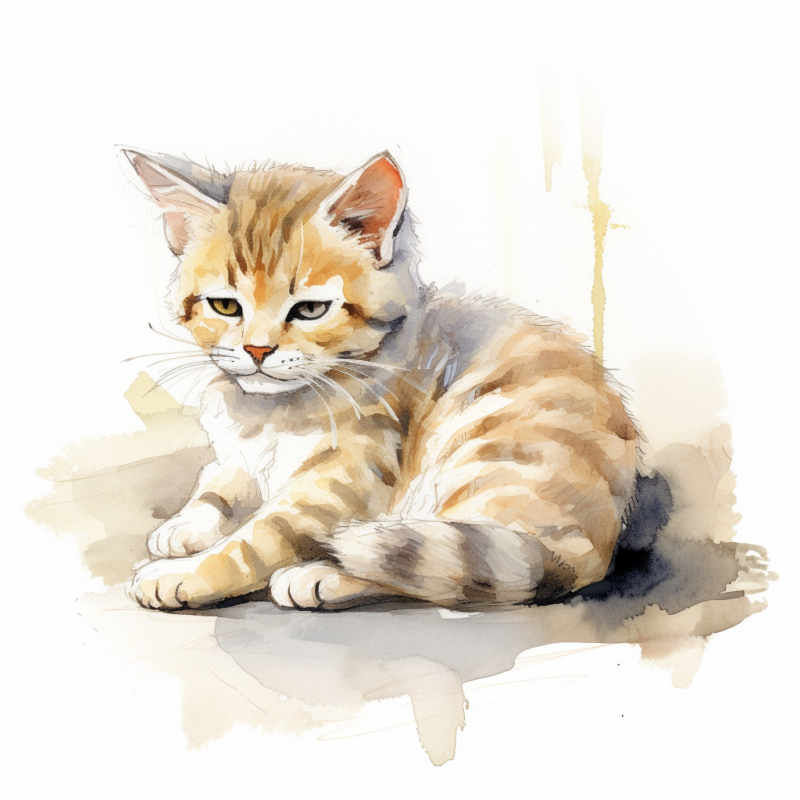
Allergic Conjunctivitis Treatment
When allergies are the root cause, the treatment will focus on eliminating or reducing exposure to the allergen, if feasible. Antihistamines or corticosteroid eye drops may lessen inflammation and allergic response. Hypoallergenic diets may sometimes be suggested if a food allergy is suspected.
Approach for Traumatic Conjunctivitis
In cases of trauma, it’s crucial to address the underlying cause of the injury. This could include removing a foreign object or addressing a chemical burn.
Anti-inflammatory eye drops or ointments could lessen inflammation, and antibiotics might be administered to ward off secondary bacterial infections. Pain management is also vital in these instances.
Fungal Conjunctivitis Treatment
Fungal conjunctivitis is typically addressed using antifungal eye drops or ointments. In serious cases, systemic antifungal medications may also be necessary. Similar to bacterial conjunctivitis, the choice of specific antifungal largely depends on the type of fungus identified in the culture and sensitivity tests.
Beyond these specific treatments, it’s crucial to monitor the cat’s progress and conduct follow-up visits with the vet to ensure the start of treatment is working. Further diagnostic testing may be needed if the cat’s condition does not show improvement or worsens. Regardless of the underlying eye problem impacting the conjunctival tissue, keeping the cat comfortable and ensuring a stress-free environment can aid their recovery. Treatment right away is always the best approach to minimize complications.
Prevention for Conjunctivitis in Cats
There are various proactive steps that pet owners can undertake to lessen the chances of their cats contracting conjunctivitis:
- Frequent Vaccinations: Regular vaccinations can serve as a protective barrier against certain viruses like the feline herpes virus and feline calicivirus, both of which can cause conjunctivitis. Consult with your vet about the recommended vaccination routine for your cat.
- Maintaining Hygiene: Ensuring cleanliness in your cat’s surroundings and itself can prevent infectious agent transmission. Frequent cleaning of items such as food and water dishes, litter boxes, and bedding is vital. In a multiple-cat household, preventing them from sharing these items is crucial, as infections can propagate this way.
- Routine Vet Check-ups: Regular vet examinations can help spot potential health concerns before they escalate into issues like conjunctivitis. Your vet can inspect your cat’s eyes and overall health and propose preventive strategies.
- Stress Avoidance: Stress can instigate a flare-up in cats carrying the herpes virus. Try to circumvent stressful situations for your cat, such as abrupt changes in their environment or daily routine.
- Balanced Nutrition and Exercise: Offering a balanced diet and ensuring your cat gets ample exercise can help fortify their immune system, aiding in fending off infections.
- Swift Treatment of Eye Injuries: If your cat suffers an eye injury or you observe any alterations in its eyes, it’s important to seek veterinary care promptly. Early intervention can prevent the onset of more severe issues, including conjunctivitis.
- Isolation of Infected Cats: If one of your cats contracts an infectious form of conjunctivitis in a multi-cat household, it’s vital to isolate them from the other cats to prevent the spread of the disease.
- Steering Clear of Irritants: Shield your cat’s eyes from potential irritants such as smoke, dust, and harsh chemicals, which could trigger conjunctivitis.
It’s important to remember not all instances of conjunctivitis can be prevented. If your cat displays signs of conjunctivitis, such as redness, swelling, or eye discharge, it’s crucial to seek veterinary care promptly. Your vet can rule out other eye conditions that might cause similar symptoms. Furthermore, remember that a cat can get conjunctivitis in both eyes simultaneously, so be sure to monitor both eyes carefully.
Frequently Asked Questions
Disclaimer: The information provided on this veterinary website is intended for general educational purposes only and should not be considered as a substitute for professional veterinary advice, diagnosis, or treatment. Always consult a licensed veterinarian for any concerns or questions regarding the health and well-being of your pet. This website does not claim to cover every possible situation or provide exhaustive knowledge on the subjects presented. The owners and contributors of this website are not responsible for any harm or loss that may result from the use or misuse of the information provided herein.

